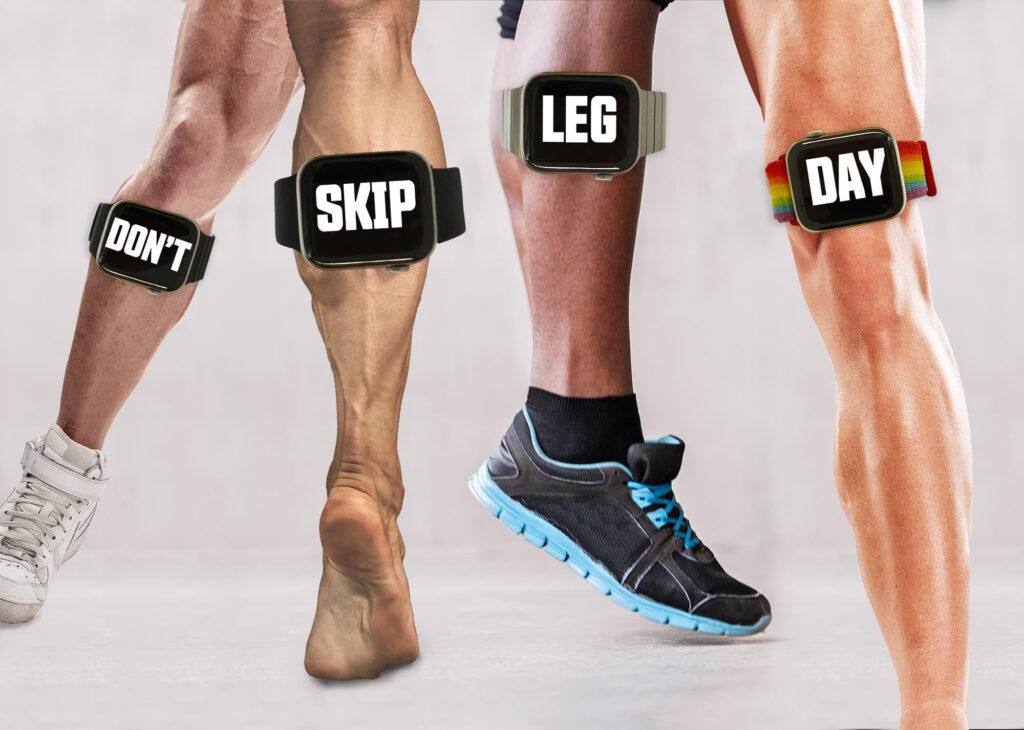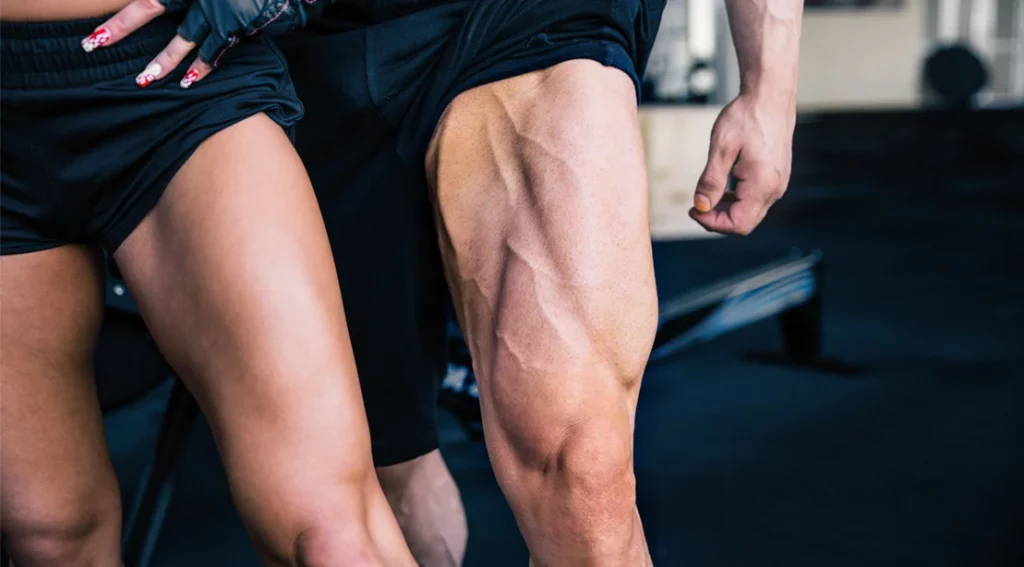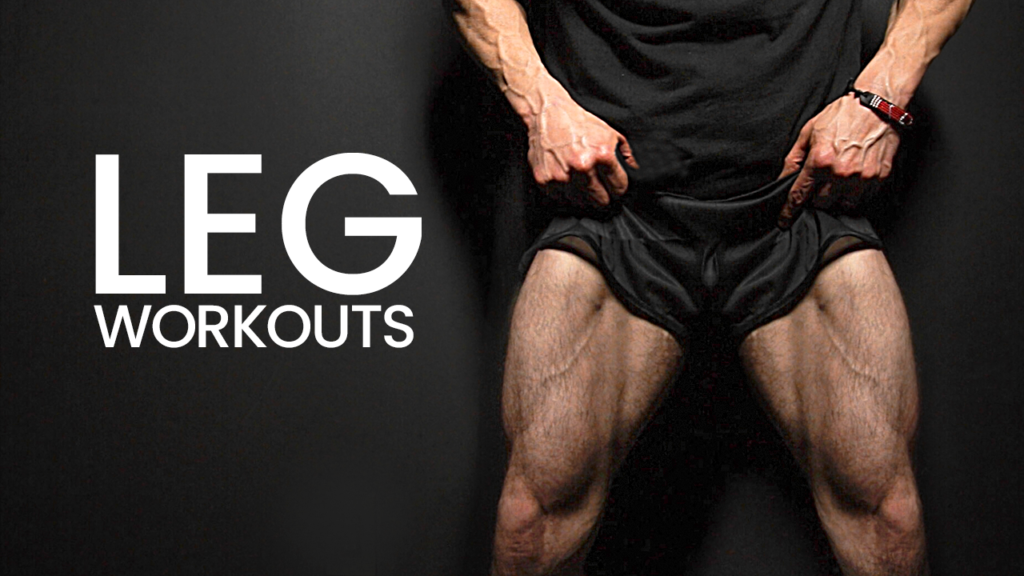Health is wealth (Small Changes, Life-long Impact)

What a workout for the legs. Do you know which muscle in our body is the strongest? The thigh muscle is the lower muscle. The lower body is the foundation of the entire body. (How to Make Leg Day Less Scary and More Fun)
It must therefore be strong and forceful. Legs is more than simply a workout; it boosts our self-esteem and inspires us to highlight its beauty.
Leg day might be skipped for a variety of reasons. One of the primary justifications? Lifting weights with the lower body can be extremely difficult.
Large, complicated lower-body workouts require more resistance lifting than any other movement for the majority of people.
Legs provide the body beauty and shape, which creates a pleasant effect. Have you ever seen a model before, particularly a woman? They work extremely hard on their bodies, especially the lower body.
The best way to observe the wonderful body is through models.
Legs Day’s strength and beauty provide as inspiration to go above and beyond.
Leg exercises are essential for laying a solid foundation for the body and preparing us for long-term physical well-being and functionality.
Leg exercises improve general strength, balance, and stability, supporting everyday tasks and preventing accidents, particularly as we age.
Leg strength enhances posture and mobility, enabling us to maintain our independence and level of activity throughout our lives. Leg workouts also work big muscle groups, which boosts metabolism, burns more calories, and helps with weight loss and heart health.
By strengthening our legs, we may develop resilience, functional fitness, and a strong foundation that will let us move freely and be active for a very long time.
Leg exercises are effective for increasing mental toughness and a positive outlook in addition to physical strength. Endorphins, the body’s natural “feel-good” hormones, are released during leg workouts and aid in lowering stress, elevating mood, and fending off worry.
Leg workouts are physically and emotionally taxing because to their intensity, which frequently involves huge muscle groups and increased energy production. As we persevere through each set, we develop discipline, attention, and confidence.
Additionally, by increasing circulation and delivering more oxygen to the brain, these workouts increase cognitive performance and mental clarity. Regular leg workouts help us develop a strong, resilient, and self-assured mindset that can lead to increased motivation and optimism in other facets of our lives.
How to Make Leg Day Less Scary and More Fun
Why do people not like leg day?
Exercises that need a lot of energy and effort to accomplish, such lunges, deadlifts, and squats, can be quite taxing on the body. Furthermore, leg training can be extremely taxing, leaving the trainer exhausted and making it challenging to complete other exercises at the same level of intensity.
Because leg workouts are infamously taxing and require a significant amount of mental and physical energy, many individuals choose to avoid or dread “leg day.”
Because leg movements like squats, lunges, and deadlifts work the quadriceps, hamstrings, glutes, and calves—some of the largest muscle groups in the body—they are hard and draining.
Moving large weights or doing high-rep leg exercises can cause severe muscular soreness, also known as delayed onset muscle soreness (DOMS), which can linger for days and make daily tasks like walking or climbing stairs painful.
Leg exercises are very difficult because they work several muscle groups simultaneously, necessitating balance, strength, and coordination. Many people find it simple to miss leg day because of this intensity as well as the resulting stiffness and exhaustion.
Overcoming these obstacles, though, can result in remarkable improvements in strength, stamina, and general fitness.
Some main reasons behind skipping legs day
Intensity and Exhaustion: Leg exercises are hard on the body since they train big muscles and frequently ask for heavy weight or a lot of repetitions, which can be draining. Leg days may feel more difficult than upper-body workouts because of this intensity.
Muscle Soreness (DOMS): Leg days frequently cause delayed onset muscle soreness (DOMS), which can cause discomfort for days following when walking, sitting, or climbing stairs. People may be discouraged from regularly exercising their legs because of this persistent pain.
How to Make Leg Day Less Scary and More Fun
Mental Focus: Because leg exercises frequently work many muscle groups and call for good technique, they take a great deal of focus and commitment. Physically and emotionally taxing, squats, lunges, and deadlifts leave many people feeling more exhausted than upper-body workouts.
Slow Results: It takes time and consistency to build leg strength and muscle. Leg day may seem less satisfying than other workouts to some people if they don’t see noticeable improvements right away.
Preference for Upper Body Training: Because they target more obvious muscles, many people find upper-body exercises like bicep curls and bench presses to be more fun or conspicuous. A predilection for upper-body days over leg days may result from this.
Fear of Injury: If performed improperly, leg workouts such as squats and deadlifts might raise the risk of hip, knee, or lower back injuries. People may be reluctant to practice these activities because of this risk.
Leg day is crucial for developing a strong, balanced body, promoting general health, and enhancing sports performance despite these obstacles.
Why legs is the hardest?

Leg day is often the most difficult and taxing workout of the week for many people. You can usually raise a lot more weight with your lower body than your upper body since your legs are stronger than your arms. Many of us instantly think of squatting when we hear the phrase “leg day.”
How to Make Leg Day Less Scary and More Fun
Large Muscle Groups: The quadriceps, hamstrings, and glutes are just a few of the body’s largest and strongest muscles found in the legs. Leg workouts are more physically taxing than ones that focus on smaller muscle groups since working these huge muscles demands more oxygen and energy.
Increased Calorie Burn: Compound movements, such as lunges, deadlifts, and squats, are common in leg exercises since they work several muscle groups simultaneously. Because it burns a lot of calories and demands a lot of cardiovascular effort, it causes exhaustion more quickly and feels more intense than standalone activities.
Core and Stability Demands: To maintain correct form during many leg workouts, particularly for movements like lunges and deadlifts, a strong core engagement and balance are necessary. This makes it more challenging because your core and smaller stabilizing muscles have to work harder to maintain each movement.
Mental Challenge: Because leg workouts call for willpower, concentration, and mental toughness, leg days are frequently psychologically taxing. Leg workouts can be disheartening because to their difficulty and soreness, which makes it mentally taxing to finish difficult sets and repetitions.
Exercises involving the legs can often result in delayed onset muscle soreness (DOMS), which can last for several days. Leg day may seem more intimidating and more difficult to recover from than other training days due to this post-workout pain.
Functional Demands on the Lower Body: After a strenuous workout, the legs are put under additional pressure because they are necessary for the majority of daily activities, such as walking, sitting, and climbing stairs. Leg day is perceived as the hardest because it is difficult to “rest” leg muscles due to the requirement for continuous movement.
Leg exercises, however challenging, improve general fitness and health by fostering the development of fundamental strength, balance, and endurance.
How to Make Leg Day Less Scary and More Fun

MVYNO XFYT Resistance Fitness Exercise Loop Bands for Yoga Pilates Gym | Stretchable , Anti Slip , Anti-Skid , Odour Free Workout Therapy Band for abs Upper Body Legs Health Workouts (Set of 5, Blue), Natural Rubber
-40% ₹599
M.R.P.: ₹999.00
What are the benefits of training legs?

Beyond merely strengthening the lower body, leg training has numerous other advantages.
Here are a few of the main benefits:
Enhances Functional Strength: Exercises for the legs increase the strength and power of the muscles utilized in daily activities such as jogging, walking, lifting, and climbing stairs. This functional strength facilitates daily tasks and encourages an active lifestyle.
Improves Stability and Balance: Stability and balance are enhanced by strong leg muscles, which lowers the chance of accidents and falls. Leg exercises also work the core muscles, which promotes stability throughout the body.
Increases Metabolism and Fat Loss: Training large leg muscles uses more energy, which raises metabolism and burns calories. This can help reduce body fat overall and aid in weight loss.
Enhances Athletic Performance: Leg strength is essential for athletic performance, whether one is running, cycling, or participating in sports. Gaining strength, speed, and endurance through leg training improves performance in practically all physical activities.
Promotes Bone Health: Squats, lunges, and other weight-bearing leg workouts improve bone density, which is critical for maintaining skeletal health over the long term and lowering the risk of osteoporosis.
Boosts Growth Hormone Production: Leg exercise promotes the release of growth hormones, which helps build and repair muscle. Overall strength and the growth of upper-body muscles may benefit from this.
Improves Posture and Mobility: The body’s alignment is supported by strong legs, which aid in enhancing posture and flexibility. Over time, leg training improves mobility and lessens pain by lowering strain on the joints and spine.
Enhances Mental Toughness: Leg exercises are difficult and require mental fortitude. Overcoming these physical obstacles increases mental toughness and self-assurance, which are advantageous in and out of the gym.
Encourages Independence and Longevity: Maintaining your independence and level of activity as you age depends on having strong legs. Maintaining mobility through regular leg training makes it simpler to preserve physical independence as one ages.
Balances Physique: Leg exercise helps create a proportionate, balanced physique, preventing the “top-heavy” appearance that results from concentrating just on the upper body. This symmetry adds to the athletic, well-rounded look.
In conclusion, leg training is an essential component of a well-rounded fitness regimen since it promotes strength, athleticism, longevity, and health.
How to Make Leg Day Less Scary and More Fun
Why is it important to not skip legs day?

For a body to be balanced, strong, and healthy, leg day must not be skipped.
This is the reason:
Strengthening the leg muscles, which are among the largest in the body, provides a strong foundation for total physical performance. Strong legs facilitate daily motions and lower the chance of damage during other exercises and daily tasks.
Enhances General Strength: The core and even upper-body muscles are used during many leg exercises, such as squats and deadlifts. Strengthening the legs improves overall body stability and strength, which helps with other exercises and practical tasks.
Increases Metabolism: Working the major muscles in the legs uses more energy, which raises metabolism and calorie burn. Frequent leg exercises assist weight control and general fitness by promoting muscle tone and fat loss throughout the body.
Improves Athletic Performance: Power, speed, and agility are critical for sports and physical activities, and strong legs are needed for these qualities. Lack of lower-body strength from skipping leg day might impair performance in exercises like lifting, sprinting, and jumping.
Encourages Balance and Symmetry: Training the legs balances the body and encourages an athletic, symmetrical appearance, whereas training the upper body alone results in a disproportionate, “top-heavy” appearance. Additionally, muscle imbalances that might result in injuries and bad posture are avoided with balanced exercise.
Promotes Bone Density and Joint Health: Weight-bearing leg exercises lower the risk of osteoporosis by increasing bone density. In order to maintain long-term joint health, they also strengthen ligaments and joints, particularly those in the hips, knees, and ankles.
How to make leg day less scary and more fun
Increases Mental Toughness: Leg exercises are difficult and require resilience and mental focus. Completing challenging leg exercises develops mental toughness and self-control, which can have a beneficial effect on other aspects of life.
Preserves Mobility and Independence as We Age: As we age, mobility, balance, and independence depend on having strong legs. Maintaining physical independence and a high quality of life long into old age is made possible by regular leg training.
To put it briefly, missing leg day compromises your long-term strength, appearance, and level of fitness. Frequent leg exercises promote a healthy, resilient, and well-rounded physique, which is essential for confidence, performance, and overall health.